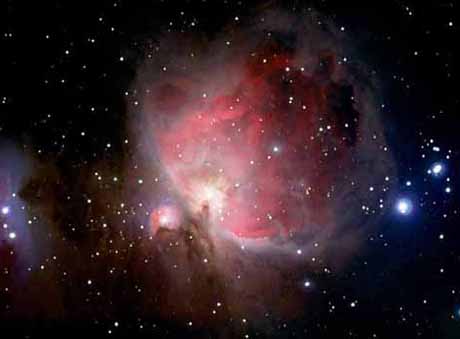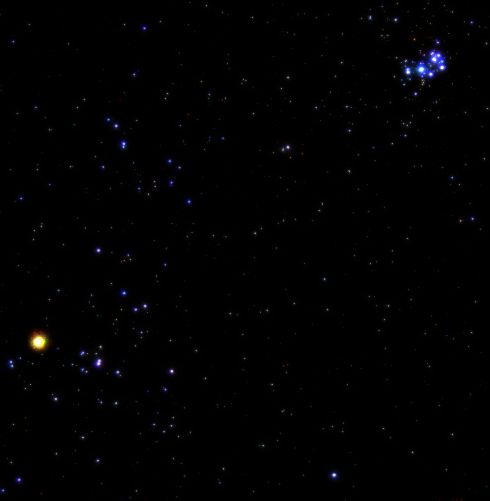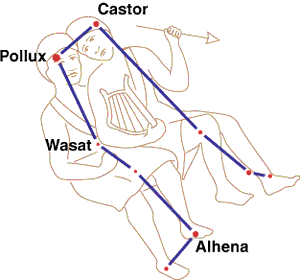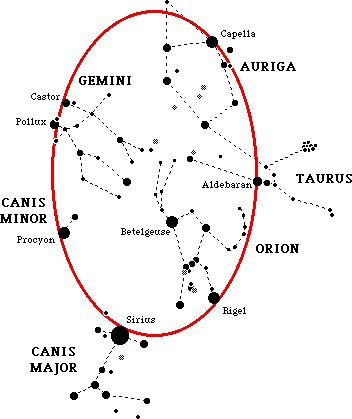Orion was a great hunter of Greek mythology, a demi-god born of Poseidon and a mortal woman Euryale. He fell in love with Merope, the daughter of the king of Chios. The king agreed to let Orion marry Merope if he would kill all the beasts in the land. Orion did, but the king reneged on the deal. Orion got drunk and raped Merope, and was blinded by the king in retaliation. Later, Orion was healed and eventually boasted to Artemis (the goddess of the hunt) that he could kill every animal on Earth. The Earth goddess Gaia overheard him, and sent a giant scorpion to kill him. After his death both he and the scorpion were placed in the sky as a warning to others. The scorpion continues to chase Orion -- when Orion sets, the Scorpion rises....
Rigel (RI-jel) - blue supergiant star (at lower right). Very massive, luminous star.
Betelguese (BEETLE-juice) - red supergiant star (upper left). A massive star nearing the end of its life, it is bigger than the radius of the Earth's orbit.
Great Orion Nebula - In Orion's dagger, a giant cloud of gas inside which many new stars are forming. These young, hot stars heat the gas, causing it to fluoresce (glow).






